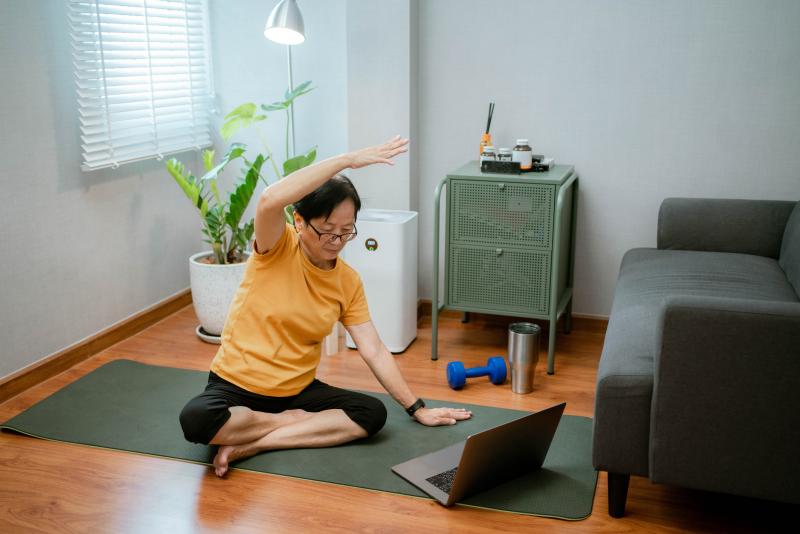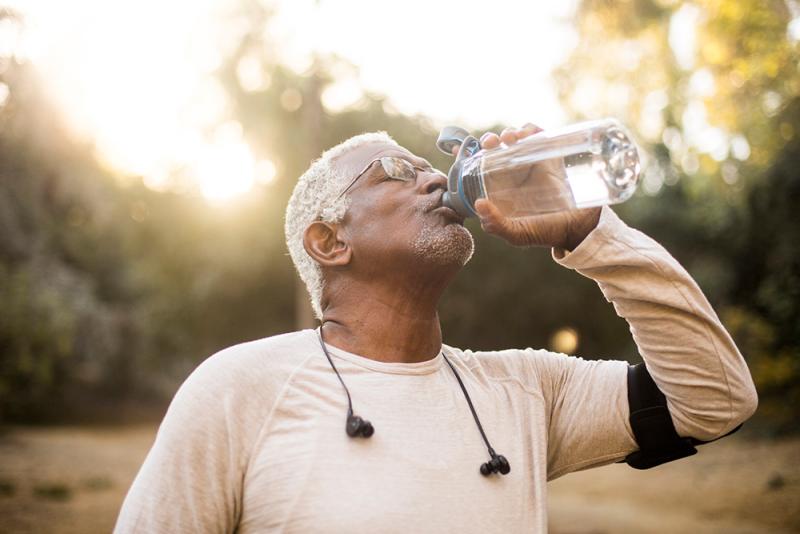
It's Important to Stay Safe while Being Active
Exercise is a great way to stay healthy, but you need to be prepared so you can do activities safely. Follow these safety tips to be ready for any activity.
Tip: If you have a health problem, or have not been active in awhile, contact your health care provider to make sure it is safe for you to be more physically active.
Image

Outdoors in Any Season:
- Put sunscreen on any exposed skin, year-round. Read the bottle to know when to put more on, especially if it washes off from swimming or sweat.
- In the winter, cover exposed skin to protect from the cold.
- In the summer, wear lightweight, light-colored clothing to avoid getting too hot. Consider working out in the early morning or in the evening when it's cooler.
- In the winter, spring and fall, wear layers of clothing so you can add or take off some if you get too hot or cold.
- At night, try to stick to well-lit areas and wear light colors and reflective clothing and shoes. If you're biking at night, use bike lights. It's important for people in cars to be able to see you.
- If you're going out alone, let someone know where you're going and when you plan to be back.
Image

Clothing, Shoes, and Equipment:
- Wear appropriate shoes for the activity and the weather. For example, wear sneakers or running shoes to run or walk. Boots will keep you safe in the snow or while hiking.
- Use safety equipment for the activity you're doing. For example, wear a helmet when riding your bike or gloves to prevent blisters when doing yard work.
- You don't need fancy workout clothes. Just wear something that allows you to move freely and do the activity comfortably.
Image

Hydration and Nutrition:
- Drink water when physically active, even if you're not thirsty. The amount each person needs will vary based on the weather and the intensity of your workout.
- You probably don't need sports drinks unless you're working out very hard or for more than a couple hours.
- Remember to drink water even if you're not feeling hot, like indoors or in the winter.
- Fuel your workout by eating a combination of protein and complex carbohydrates one to four hours before you exercise. Some examples are yogurt with berries, fruit with peanut butter, or a handful of nuts with pretzels.
Image

Avoiding Injury:
- Start low and go slow. Start slowly with new activities and gradually increase your activity levels.
- Listen to your body. Take a break if there's too much pain, you feel dizzy or sick, or if it's very hard to breathe. Talk to a health care provider if you have joint or muscle pain that lasts more than three days after resting.
- Use the right amount of weight. You can add more weight as you get used to the exercise.
- Maintain good form when bending, lifting and stretching.
- Limit risk of falling. Make sure you have enough room to move around if you're exercising inside. When outside, watch where you step if the ground is uneven, slippery, or icy.
- Warm up. Do a 5 to 10 minute warm up to ease into a higher heart rate.
- Cool down. When you're done with your workout, do a 5 to 10 minute cool down until your heart rate gets back to the normal resting rate.

